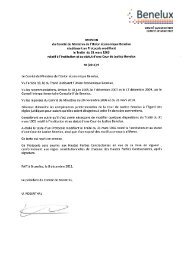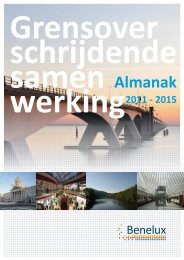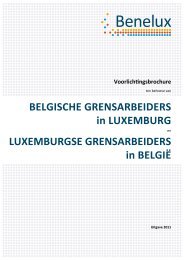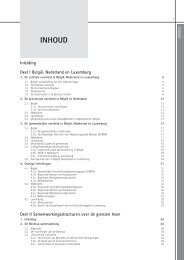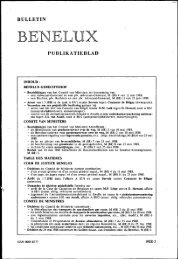The North Seas Countries' Offshore Grid Initiative - Initial ... - Benelux
The North Seas Countries' Offshore Grid Initiative - Initial ... - Benelux
The North Seas Countries' Offshore Grid Initiative - Initial ... - Benelux
You also want an ePaper? Increase the reach of your titles
YUMPU automatically turns print PDFs into web optimized ePapers that Google loves.
In particular, PEMMDB generation and load data consistent with the EU2020 Scenario was<br />
used to model the neighbouring countries. This scenario is based on the 2020 National<br />
Renewable Energy Action Plan (NREAP) targets set by governments of the member states<br />
and represents a context in which all the<br />
European Union 20-20-20 objectives are met.<br />
Figure 7-3: Market Modelling Perimeters in the NSCOGI Study<br />
Each country is modelled as one market node,<br />
neglecting the internal bottlenecks, except for<br />
Denmark and Luxembourg where, due to the<br />
grid design, the market areas are split.<br />
<strong>North</strong>ern Ireland and Ireland are modelled<br />
together as they form a single wholesale<br />
market. All these nodes are connected with<br />
each other with specified cross-border<br />
transfer capacities.<br />
A 1.2.3 Market Integration Potential (2020 <strong>Grid</strong>)<br />
An important element in the process, facilitated by market modelling, is the assessment of<br />
possibilities of increasing interconnection capacity between the countries. Market<br />
modelling can be used to assess the reduction of the overall variable generating costs in<br />
the system when an extra interconnector is added connecting high and low price areas..<br />
<strong>The</strong> outcome shows a combined benefit of connecting RES and facilitating the market.<br />
A methodology has been developed to get a first impression of additional economically<br />
feasible interconnections by comparing the calculated market benefits with the investment<br />
cost.<br />
<strong>The</strong> process inside the market models can be summarised as follows:<br />
1. Run market simulations for the 8760 hours in the year. <strong>The</strong> initial simulation is done<br />
with 2020 interconnections as included in the TYNDP 2012.<br />
2. Calculate actual system cost savings: This can only be performed after the first<br />
iteration. <strong>The</strong> system cost savings resulting from additional interconnections consist<br />
of two parts. First, the production cost savings as additional interconnections allow a<br />
more cost efficient electricity generation. Second, the investment costs of the<br />
interconnections.<br />
Page7-6



